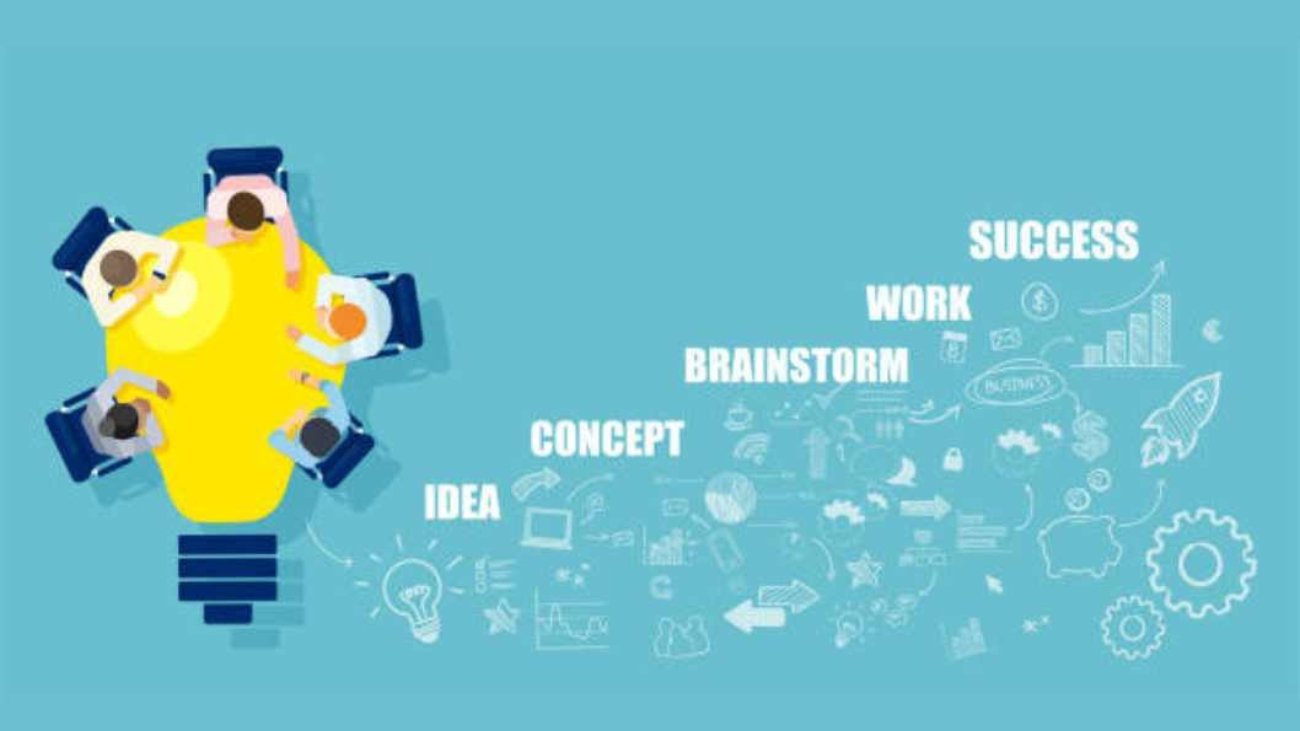I. Introduction
In today’s digital world, having a website isn’t a luxury – it’s a necessity. Whether you’re a seasoned entrepreneur or brimming with a fresh idea, a website is your online headquarters, open 24/7 to showcase your brand, connect with customers, and propel your success.

II. Define and Refine Your Idea
Before you start building your website, it’s essential to clearly define your idea and its purpose. This may seem obvious, but many people skip this crucial step, leading to confusion, wasted resources, and a website that fails to resonate with their target audience.
Clearly defining your idea and its purpose helps you:
- Clarify your message: What problem do you solve? What value do you offer?
- Identify your target audience: Who are you creating the website for?
- Determine your unique value proposition: What sets you apart from others?
- Establish your goals: What do you want to achieve with your website?
- Create a focused vision: What do you want your website to accomplish?
To define and refine your idea, ask yourself:
- What inspired my idea?
- What problem does it solve?
- Who will benefit from it?
- What makes it unique?
- What are my short-term and long-term goals?
Take your time to reflect on these questions, and write down your answers. This will help you distill your idea into a clear, concise, and compelling concept that will guide your website’s development.
Identifying Your Target Audience
- Create buyer personas: Develop detailed profiles of your ideal customers, including demographics, goals, challenges, and behaviors.
- Conduct surveys or interviews: Reach out to potential customers and ask about their needs, preferences, and pain points.
- Analyze industry reports: Research industry trends, growth opportunities, and customer segments.
Conducting Market Research
- Online research: Explore industry blogs, articles, and social media to understand market trends and customer conversations.
- Competitor analysis: Analyze your competitors’ strengths, weaknesses, and strategies.
- Market size and growth potential: Estimate the size of your target market and its growth potential.
Determining Your Unique Value Proposition (UVP)
- Identify your unique strengths: Determine what sets you apart from competitors.
- Solve a specific problem: Clearly define the problem you’re solving and how your solution is unique.
- Develop a compelling message: Craft a concise and persuasive message that communicates your UVP.
III. Plan Your Website
Planning your website’s structure and content is crucial to creating a website that is easy to navigate, visually appealing, and engaging. A well-planned website will help you communicate your message effectively, build trust with your audience, and achieve your goals.
Importance of Planning
- Clear navigation: A clear structure helps visitors find what they’re looking for.
- Consistent design: A consistent design enhances your brand and user experience.
- Relevant content: Relevant content engages your audience and builds trust.
- Efficient development: Planning saves time and resources during development.
Create a Sitemap and Wireframes
- Sitemap: Create a visual representation of your website’s structure, including pages and hierarchy.
- Wireframes: Sketch the layout and user interface of each page, including elements like headers, footers, and CTAs.
Develop a Content Strategy
- Define your content goals: Determine what you want to achieve with your content.
- Identify your target audience: Understand what content resonates with your audience.
- Content types: Decide on the types of content (blog posts, videos, images, etc.) that will engage your audience.
Choose a Content Management System (CMS)
- Popular options: Consider popular CMS options like WordPress, Drupal, or Joomla.
- Ease of use: Choose a CMS that is easy to use and manage.
IV. Design Your Website
A visually appealing design is crucial for creating a website that attracts and engages your audience. A well-designed website builds trust, communicates your message effectively, and enhances user experience.
Importance of Visually Appealing Design
- First impressions: Your website’s design is the first thing visitors notice.
- Brand identity: Your design reflects your brand’s personality and values.
- User experience: A well-designed website is easy to navigate and use.
- Conversion rates: A visually appealing design can increase conversion rates.
Choose a Color Scheme and Typography
- Brand consistency: Ensure your color scheme and typography align with your brand identity.
- Contrast: Select colors with sufficient contrast for readability.
- Typography: Choose typography that is clear, legible, and consistent.
- Limit colors: Use a maximum of 3-4 colors to avoid visual overload.
Select Images and Graphics
- High-quality images: Use high-quality, relevant images that enhance your content.
- Optimize images: Compress images to reduce file size and improve loading times.
- Graphics: Use graphics to break up text, illustrate points, and add visual interest.
- Consistency: Ensure images and graphics align with your brand identity.
Design a Responsive and User-Friendly Interface
- Responsive design: Ensure your website adapts to different devices and screen sizes.
- Clear navigation: Use clear and consistent navigation to help visitors find what they need.
- CTAs: Use prominent calls-to-action (CTAs) to guide visitors towards conversion.
- White space: Use white space effectively to create a clean and uncluttered design.
V. Build Your Website
Building your website is a crucial step in bringing your idea to life. You have several options to choose from, depending on your technical expertise, budget, and preferences.
Options for Building a Website
- Hiring a Developer or Agency: Hire a professional developer or agency to build your website from scratch.
- Using a Website Builder or CMS: Use a website builder like Wix, Squarespace, or Weebly, or a Content Management System (CMS) like WordPress, Drupal, or Joomla.
- Coding it Yourself: Build your website from scratch using programming languages like HTML, CSS, and JavaScript.
VI. Launch and Promote Your Website
Launching and promoting your website is a crucial step in getting your idea out to the world. A well-planned launch and promotion strategy can help you reach your target audience, build brand awareness, and drive traffic to your website.
Promote Your Website Through Social Media and Marketing
- Social media: Share your website on social media platforms and engage with your audience.
- Content marketing: Create valuable content to attract and retain a clearly defined audience.
- Email marketing: Build an email list and send regular newsletters to drive traffic and engagement.
- Paid advertising: Use paid advertising channels like Google Ads and Facebook Ads to reach a wider audience.
Optimize for Search Engines
- Keyword research: Conduct keyword research to identify relevant keywords and phrases.
- On-page optimization: Optimize your website’s title tags, meta descriptions, and header tags.
- Content creation: Create high-quality, keyword-rich content to attract search engines.
- Link building: Build high-quality backlinks from authoritative sources to improve your website’s authority.
VII. Conclusion
In conclusion, converting your idea into a website requires careful planning, execution, and promotion. By following the steps outlined in this guide, you can bring your idea to life and share it with the world. Start converting your idea into a website today and take the first step towards making your vision a reality!



